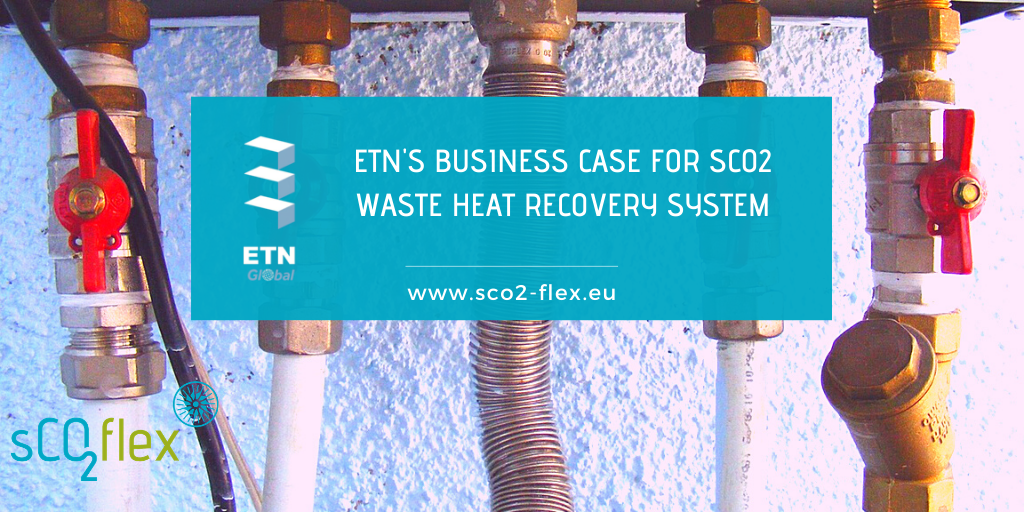Check out the report on ETN’s Business case for sCO2 Waste Heat Recovery System first released in October 2020.
The “Business case for sCO2 Waste Heat Recovery System” report was issued by European Turbine Network (ETN), as part of the activities within ETN’s Supercritical CO2 (sCO2) Working Group. The sCO2 Working Group aims to bring together manufacturers, end users, suppliers, and academia to assess the development and the current state of the art of sCO2 technology.
The objective of this business case is to investigate the techno-economic feasibility of a sCO2 closed loop waste heat recovery system coupled with heavy-industrial processes (e.g. cast-iron, cement production, aluminium production, etc.), which have available flue gases at high temperature (above 400°C) in reference to a specific business case.
Industrial facilities release a large amount of heat in the atmosphere as a by-product of their processes. To improve environmental performance and increase the process profitability, a portion of the waste heat can be recovered and employed for power generation by recovery systems.
Supercritical CO2 systems are emerging as potential alternatives to the well-established technologies for Waste Heat Recovery (WHR) power generation in heavy industry. Such systems are characterised by high performances, reduced footprint, reduced water consumption and they are suitable for a wide range of heat sources.
Currently, technologies like Organic Rankine Cycles can be applied only to low-medium temperature heat sources, while steam plants cannot be downscaled to be applied in many WHR cases. In this respect, sCO2 plants could be an interesting alternative to conventional technologies, or a solution for a market share currently underserved.
The business case started with the assessment of the available waste heat in a specific industrial site. Consequently, a thermodynamic analysis has been carried out to define the most suitable cycle. Some preliminary plant layouts have been designed where the main plant components such as turbomachinery and heat exchangers have been taken into consideration.
Finally, plant economic performance indicators, such as NPV, PBP, LCOE, IRR etc., have been evaluated and discussed as results of the analysis.
ETN’s “Business case for sCO2 Waste Heat Recovery System” report was published in October 2020.
The full report can be downloaded here.
Interested to learn more about ETN’s Supercritical CO2 Working Group? Read about their activities here.
